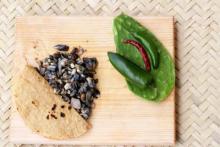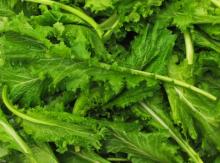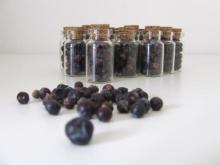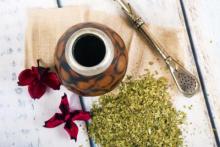superfoods
Huitlacoche: A Rich Source Of Nutrients Since Aztec Times
Mexican food is popular all over the world, but unfortunately, some people think it consists solely of tacos. While it’s true that tacos are popular in the country and are available almost everywhere, Mexican food consists of various dishes and ingredients that are beneficial to our health.
Superfood 101: Mustard Greens!
Basically, mustard greens (sarson or rai, as they are called in India) have a superb nutrition-to-calorie ratio—which means you get the most nutrition out of a bite and don’t stack those calories either! Plus, their flavor is such that they can be made into many versatile dishes, and the taste tends to grow on you. But let’s talk about the health aspects first…
Lower Your Cancer Risk With These 5 Food Tips
In our modern world, chronic and deadly diseases are a major problem that modern medicine is struggling to fix. In 2016, an estimated 595,690 died from cancer alone. While genetics do a play a role, we are not powerless to lower our risk of this deadly disease in all of its forms.
Superfood 101: Swede!
Swedes are closely related to rutabagas and turnips, who are fellow members of the cabbage family. They are a relatively new plant cultivated in Sweden in the 15th century. They were introduced in Scotland in the 18th century, where a swede was known as a Swedish turnip and called a “neep.” It was often served pureed or mashed as a side dish with haggis.
The Uncommon Spice: Juniper Berries
When you think of berries, you probably imagine plump blueberries or succulent strawberries picked at the peak of perfection. It is not often that juniper berries, which are not truly berries at all, come to mind. These antioxidant-rich, heart-healthy “berries” are actually a bitter spice originating from the female seed cones that come from juniper plants, a type of conifer, which is a cone-bearing shrub or tree.
Superfood 101: Cauliflower!
Cauliflower is a member of the family Brassicaceae in the genus Brassica that contains forty species. It is the cultivated member of the cabbage family and is closely related to wild cabbage and broccoli. General consensus is that the plant originated in the area around Cyprus or the Near East.
Ask A Practitioner: Why Drink Bone Broth?
Join Basmati.com every week for a Q&A session with one of Basmati’s practitioners, Melissa Hill (FDN-P)! We know that there is a lot of confusing information out there, which can make applying health advice overwhelming. Sometimes, it’s best to ask a practitioner directly, so each week we’ll cover a common health question!
Superfood 101: Pecans!
The pecan is a member of the walnut family. The genus contains twenty-two species and the pecan is closely related to the hickory nut. Pecans are native to the central southern regions of what is now the United States. The term pecan is derived from the Algonquin word “paccan” which refers to both hickory and pecan nuts.
Yerba Mate For Health & Socializing
Tea has been used by many cultures as a medicine, and is considered a pastime in countries all over the world. Yerba mate has a different story. It comes from the Guaraní peoples in Paraguay, Argentina, Uruguay, and southern Brazil, where it is known as chimarrao.










